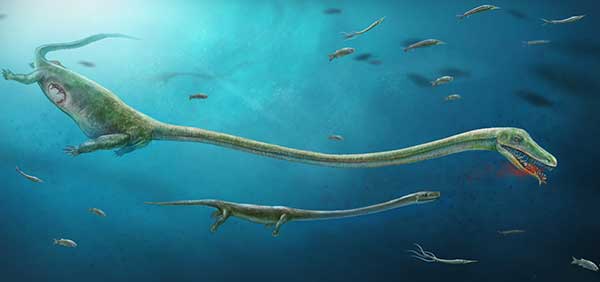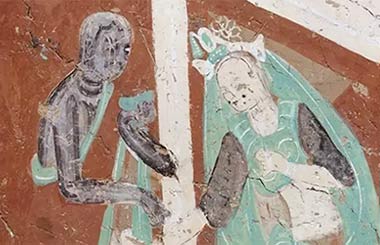Fossil offers clues to live births
 |
|
An image released by Nature magazine in February shows a pregnant Dinocephalosaurus catching a fish.[Photo/AFP] |
Findings change understanding of vertebrate reproductive systems
A fossil of a long-necked marine reptile unearthed in Yunnan province shows the creature that lived millions of years before dinosaurs was developing an embryo, an indicator that it gave birth to live offspring, scientists said on Tuesday.
The discovery at the Luoping Biota National Geopark of the pregnant long-necked marine reptile that lived about 245 million years ago proved the live birth of the unusual fish-eating reptile, known as the Dinocephalosaurus, or terrible-headed lizard, according to research published in the journal Nature Communications.
"Our discovery pushes back evidence of reproductive biology in the group by roughly 50 million years, and shows that there is no fundamental reason to suggest that archosauromorphs, or ruling reptiles, did not give live birth," said Liu Jun, the lead author of the research and a paleontologist at Hefei University of Technology in Anhui province.
"Evidence of live birth among this category has never been discovered. The findings have changed our understanding of the evolution of vertebrate reproductive systems," he said.
Liu added that some reptiles - including about 20 percent of the world's 9,400 species of snakes and lizards - give birth to live young.
The fossil was uncovered along with another 20,000 fossils at the geopark in 2008.
With the help of other researchers, Liu was able to restore the fossil to its original shape and identify the creature in 2011. It is now preserved at the Chengdu Institute of Geology and Mineral Resources.

















